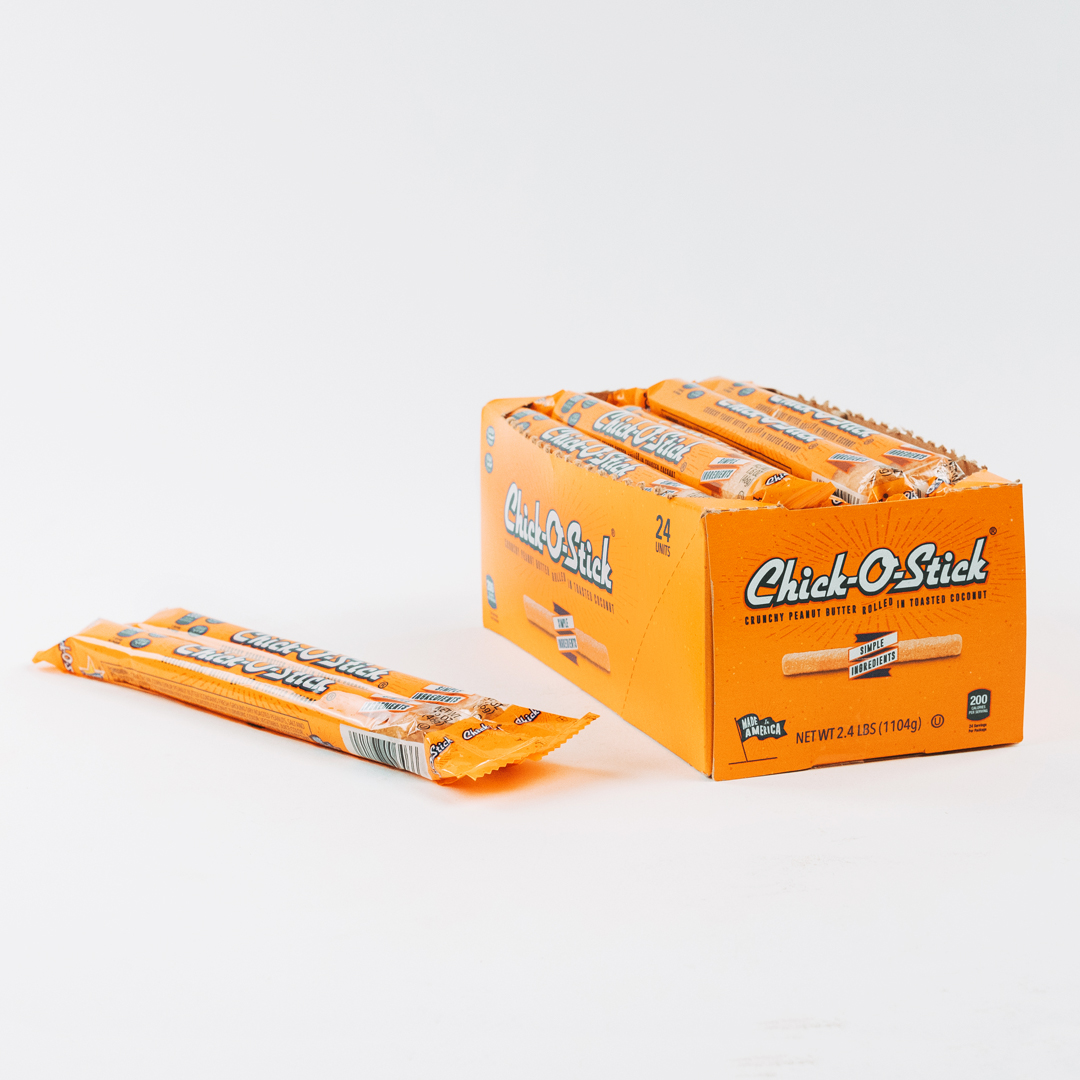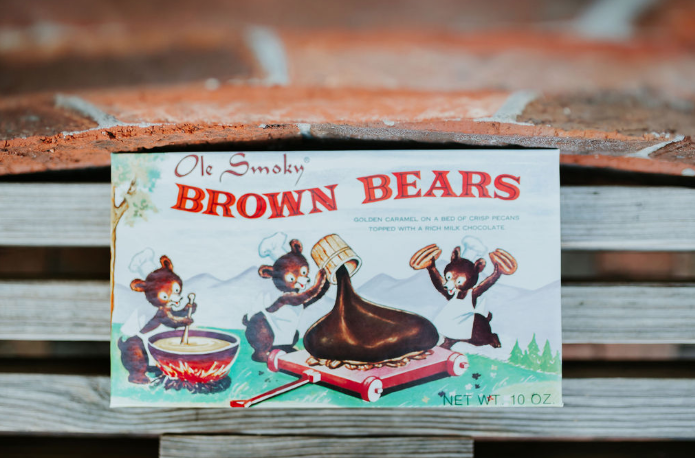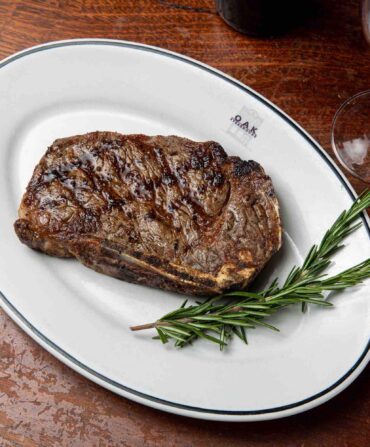Moon Pies and Goo Goo Clusters are two Tennessee-born confections that have risen from obscure beginnings to become regional cult favorites. Perhaps some of the other Southern candies on this list, while not quite as well known, could do the same, offering the sweet taste of nostalgia to those who are familiar with them and new flavors to those who don’t.
Blue Monday Sweets
Ruth Hunt Candies
Mt. Sterling, Kentucky
Ruth Hunt Candies was born when founder Ruth Tharpe Hunt made sweets for her bridge club, cooking in her Mt. Sterling, Kentucky kitchen. In 1921 she opened a small candy-making business that still stands today and churns out such confections as red cinnamon suckers, chocolates, and Hunt’s most popular creation, Blue Monday Sweets—pulled cream candy covered in dark chocolate. Pulled cream candy itself is an old-fashioned Kentucky tradition, made of butter and sugar that is blended and pulled, kind of like taffy, then hardened on cold marble slabs.

Chick-O-Sticks
Atkinson Candy
Lufkin, Texas
Peanut butter and toasted coconut come together to form Chick-O-Sticks, made by Lufkin, Texas-based Atkinson Candy. The company began in 1938, offering quick, cheap pick-me-ups during the Depression, and Southerners have enjoyed crunchy Chick-o-Sticks since the 1940s. Atkinson makes a variety of candies—Sophie Mae peanut brittle and fruit-flavored Gemstones are also well-loved—but the chicken bone-inspired snacks remain their most well-known confection. “Even though there’s no chicken in a Chick-O-Stick, the candy does resemble fried chicken with its golden hue and toasted coconut flakes on the outer shell,” says Sarah Atkinson, a fourth generation candy maker.

Caramel Creams and Cow Tales
Goetze’s Candy Company
Baltimore, Maryland
Founded in 1895, Goetze’s Candy Company in Baltimore, Maryland, is famous for not one, but two confections that wrap chewy caramel around a sugar cream center: the square Caramel Creams, introduced in 1918, and Cow Tales, launched in the 1980s. Still based in Baltimore, this fifth-generation family-run business sells both the original versions of their caramel creations, as well as strawberry, licorice, and chocolate flavors.

Coconut Patties
Anastasia Confections
Orlando, Florida
Tapping into all things tropical, Anastasia Confections got started selling saltwater taffy and creamy milk chocolate Cho-o-Gators in 1984 for tourists visiting Florida. But their coconut patties—shredded coconut centers dipped in dark or milk chocolate—quickly outstripped all their other offerings. First based in Pompano Beach and now in Orlando, Anastasia produces 8,000 pounds of coconut patties each day, and has added flavors like key lime and piña colada. The patties are so popular that earlier this year, a South Florida politician filed a bill to make them the official candy of the Sunshine State.

Red Band Horehound Stick Candys
Helms Candy Company
Bristol, Virginia
For more than one hundred years, the Helms Candy Company has thrived out of the Twin City, which straddles the state line between Tennessee and Virginia. One of their most distinctly flavored treats is Red Band Horehound Stick Candy, derived from an herb that’s related to mint with a sharp, bittersweet flavor akin to licorice or root beer. Horehound has been used for centuries as medicine to help with digestion or heal sore throats. Helms is one of the few U.S. candy makers who still produce sugar-coated horehound sticks.

Red Bird Peppermint Candy Puffs
Piedmont Candy Factory
Lexington, North Carolina
Peppermint puffs are the star of the Piedmont Candy Factory, opened in 1890 in Lexington, North Carolina. The business, originally the storefront of a candy manufacturer specializing in sugar sticks, got off the ground with the help of Edward Ebeliein, an apprentice at what was then called NC Candy Company. After Ebeliein became the sole owner of the company and changed its name, he upped production, eventually churning out almost 2,000 pounds of candy-striped peppermint candy puffs and sticks per day. Today, the familiar stripes of their sugary Red Bird peppermints are still molded by hand.

Brown Bears
Ole Smoky Candy Kitchen
Gatlinburg, Tennessee
Dave and Peggy Dych founded the Ole Smoky Candy Kitchen in 1950, providing visitors to the Gateway to the Great Smoky Mountains National Park with a firsthand look at how candy was traditionally made in copper kettles. One of the best sellers to this day remains their milk chocolate Brown Bears, featuring sweet clusters of homemade caramel and chocolate with a roasted pecan center. “Most people who come generationally want the signature box, the same that their grandmother used to bring them,” says Margaret Atchley of her family business. “I really buy into the heritage factor of it.” With two shops in Gatlinburg, there’s time to buy a batch of Brown Bears … and then go back for seconds.

Peanut Patties
Tyler Candy Company
Tyler, Texas
Available in traditional rounds or even shaped like the Lone Star state itself, the Peanut Patties made by Tyler Candy Company in Tyler, Texas, about an hour and a half east of Dallas, blend handfuls of peanuts suspended in sweet, glossy pink candy. (They’re kind of like peanut brittle with a little colorful flair.) Tyler Candy has been operating in the same two-acre facility for seventy years, with no end in sight, as they continue to produce and ship Peanut Patties, pralines, and pecan logs.

Stuckey’s Pecan Rolls
Stuckey’s
Eastman, Georgia
In the 1930s, W.S. Stuckey, Sr. began selling homemade candies and divinity made with pecans from his family’s southcentral Georgia orchards to highway travelers along U.S. Route 23. As a chain, Stuckey’s spread across the nation during the 1950s and 60s, with more than 350 roadside locations at the company’s peak, all serving souvenirs, cold drinks, and pecan candy from beneath signature teal roofs. Stuckey’s Pecan Rolls, which have been sold for almost 70 years, start with creamy nougat centers laced with maraschino cherry. The logs are then dipped in melted caramel and cooled before being rolled in crushed pecans, as perfect now as they were then.









